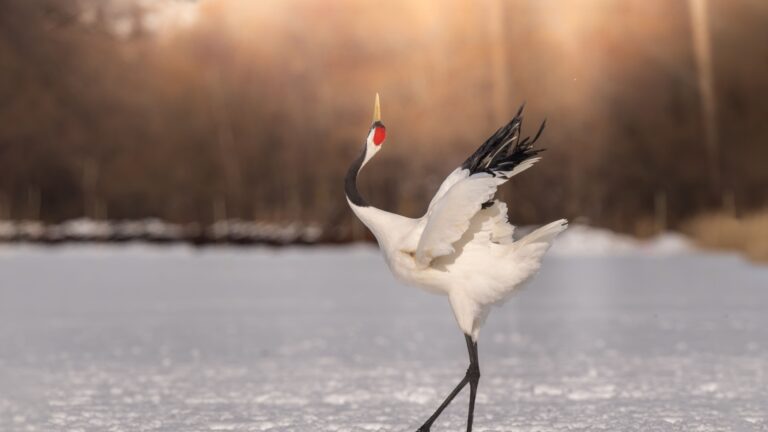10 Most Wholesome Animals In The Wild
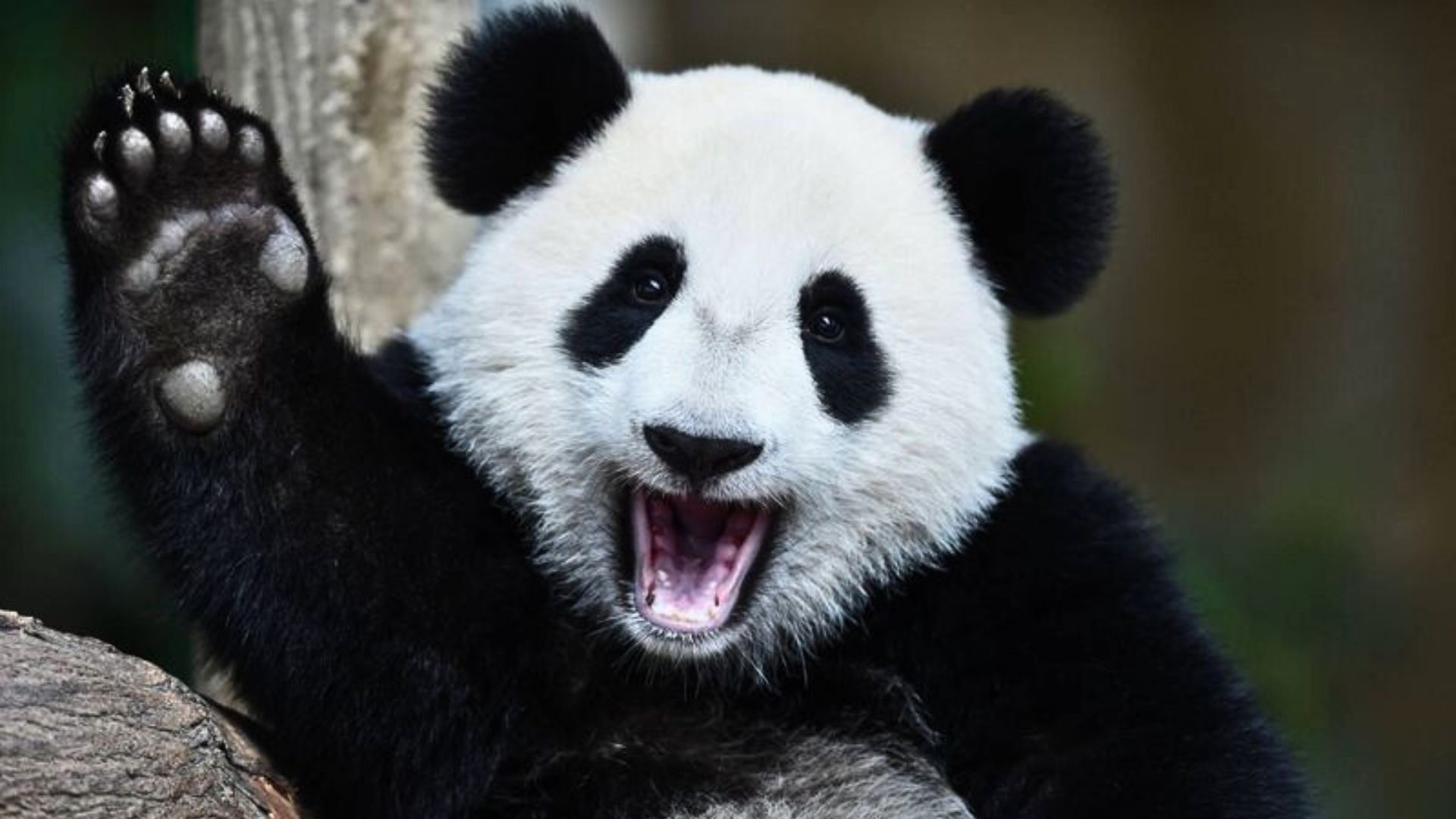
Discover the heartwarming wonders of the animal kingdom with our list of the 10 most wholesome animals in the wild.
These creatures, admired for their gentle nature and delightful behaviors, remind us of the beauty and kindness found in nature.
Join us on this journey to explore their charming traits and the happiness they bring to the world.
1. Quokka
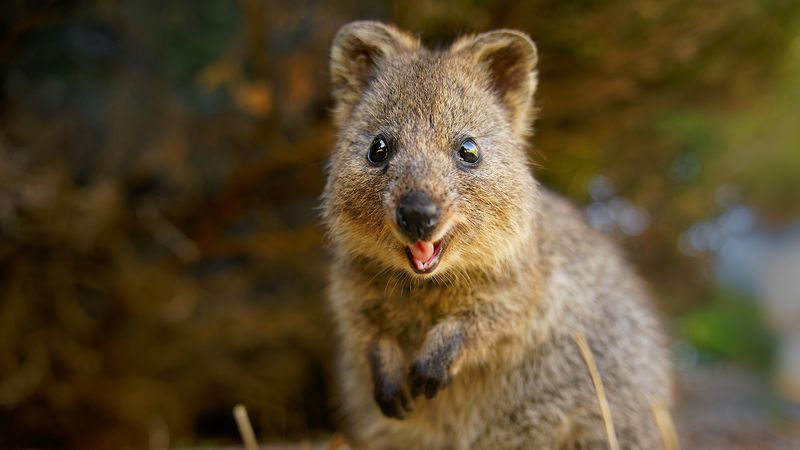
Quokkas are often hailed as the happiest animals in the wild, thanks to their constantly smiling faces.
These small marsupials, found primarily on Rottnest Island in Australia, have captured the hearts of many with their friendly demeanor and photogenic nature.
They are social creatures, living in small groups, which helps them stay safe and find food together. In fact, their curious nature often leads them to approach humans, making them a favorite subject for selfies.
Despite their cheerful appearance, quokkas are resilient animals that have adapted well to their environment.
They primarily feed on grasses and leaves, which are abundant on their island home. This diet, along with their nocturnal habits, helps them conserve energy during the hotter parts of the day.
While quokkas are generally fearless, it’s crucial to respect their space and habitat. Observing from a distance ensures that these delightful animals remain safe and undisturbed.
So, if you ever find yourself on Rottnest Island, be sure to capture a moment with a quokka, but remember to do so responsibly.
2. Panda
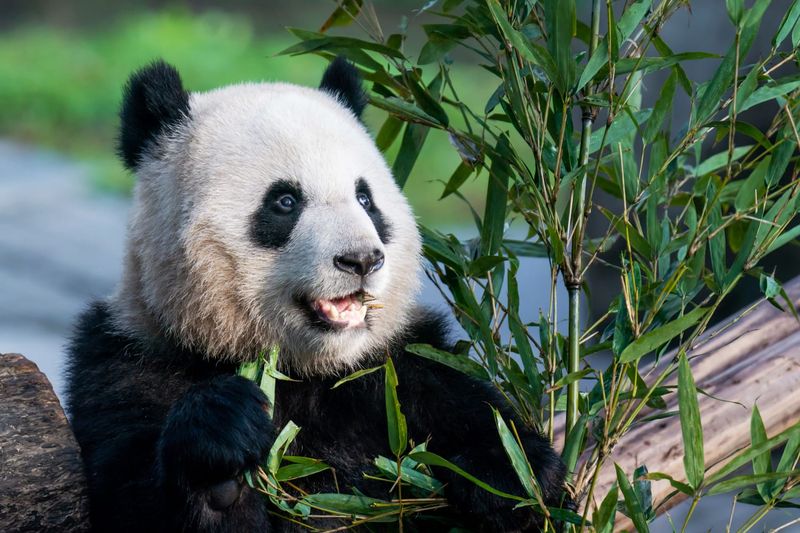
Pandas are the gentle giants of the animal world, well-loved for their distinctive black and white fur and playful antics.
Native to the bamboo forests of China, these bears spend most of their day eating bamboo, a diet that supports their calm and laid-back lifestyle.
Their peaceful nature is evident in their interactions, as they rarely engage in aggressive behavior.
These bears are solitary by nature, preferring to roam their spacious territories alone. However, they communicate using various vocalizations and scent markings, which help them maintain contact with other pandas without direct interaction.
This solitary lifestyle contributes to their enigmatic appeal, making them fascinating subjects for wildlife enthusiasts.
Conservation efforts have been pivotal in protecting pandas and their habitat. By supporting organizations dedicated to preserving their environment, we can help ensure these lovable creatures continue to thrive.
Seeing a panda in its natural habitat is a magical experience, one that highlights the importance of working towards a sustainable future for all wildlife.
3. Sloth
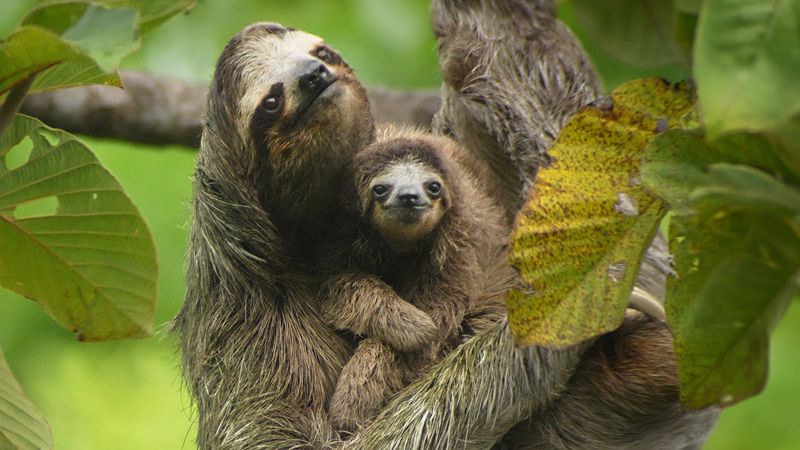
Sloths, with their leisurely pace and gentle demeanor, are the embodiment of relaxation.
Found in the rainforests of Central and South America, these creatures spend the majority of their lives hanging upside down in trees, moving only when absolutely necessary.
Their slow movement isn’t just adorable; it’s an effective strategy to conserve energy and avoid detection by predators.
These tree-dwellers have a symbiotic relationship with the ecosystem, as their fur hosts a variety of algae and insects, contributing to the diversity of their habitat. In return, the algae help camouflage the sloths, providing them with an added layer of protection.
While they may seem sleepy and indifferent, sloths are incredibly adaptable animals. They have a unique ability to slow their metabolic rate, allowing them to survive on a diet of leaves and small insects.
If you ever have the chance to see a sloth in the wild, take a moment to appreciate the tranquility they bring to their environment.
4. Capybara
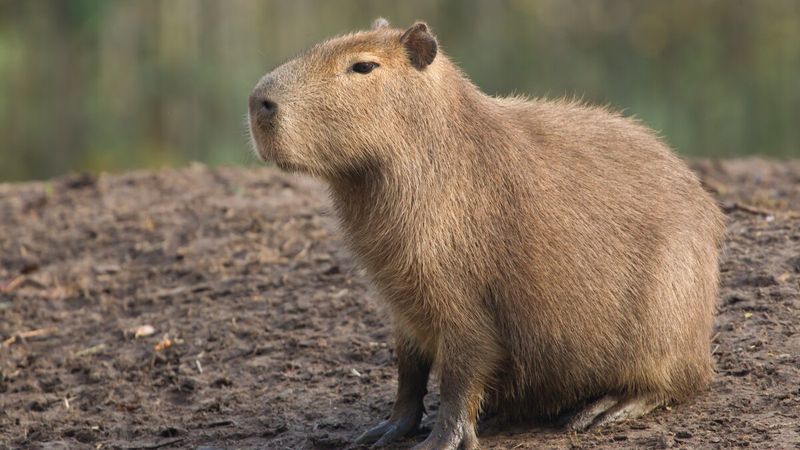
Capybaras are the world’s largest rodents, known for their amiable nature and social lifestyle. These gentle giants inhabit the wetlands and riverbanks of South America, often seen relaxing in groups, which can include up to 100 individuals.
This social structure helps them keep watch for predators and maintain a sense of community.
Their friendly demeanor extends beyond their species, as capybaras are often found coexisting with other animals like birds and monkeys, forming unique bonds in the wild.
This peaceful coexistence showcases their non-aggressive nature and ability to adapt to diverse environments.
Capybaras are semi-aquatic, spending a significant amount of time in the water, which helps them regulate their body temperature and escape from predators.
Their love for water and harmonious lifestyle make them a symbol of peace in the animal kingdom.
Observing capybaras in their natural habitat is a delightful experience, offering insight into the beauty of community and cooperation.
5. Koala
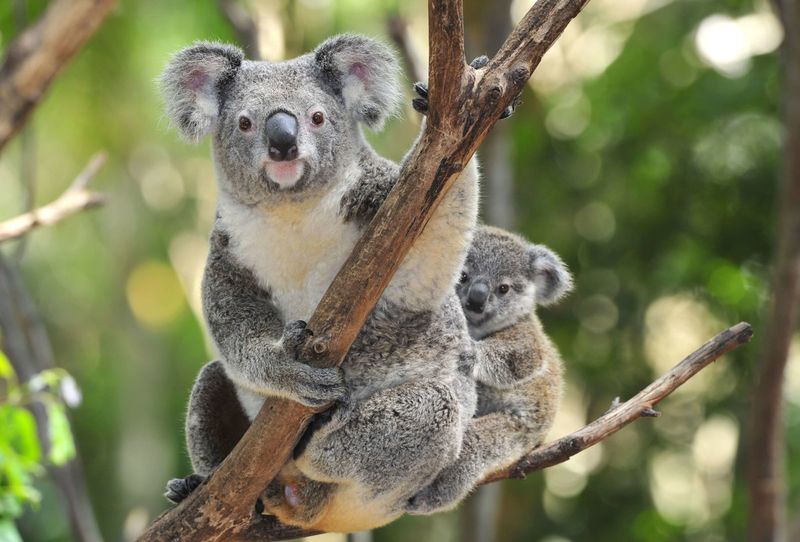
Koalas, with their fluffy ears and gentle expressions, are one of Australia’s most iconic animals. These marsupials are often found perched in eucalyptus trees, where they spend most of their time resting or feeding on eucalyptus leaves.
Their diet consists almost exclusively of these leaves, which provide all the nutrients they need, albeit with low energy content.
Due to their low-energy diet, koalas sleep up to 20 hours a day, conserving energy while maintaining their adorable image.
Despite their sleepy nature, they are excellent climbers, using their sharp claws and strong limbs to navigate the tree canopies with ease.
Koalas face significant challenges from habitat loss and climate change. Conservation efforts are essential in ensuring their survival and the preservation of their natural habitat.
By supporting these efforts, we can help protect koalas, ensuring future generations can enjoy the presence of these charming creatures.
Encountering a koala in the wild is a serene experience, highlighting the importance of safeguarding our planet’s biodiversity.
6. Otter
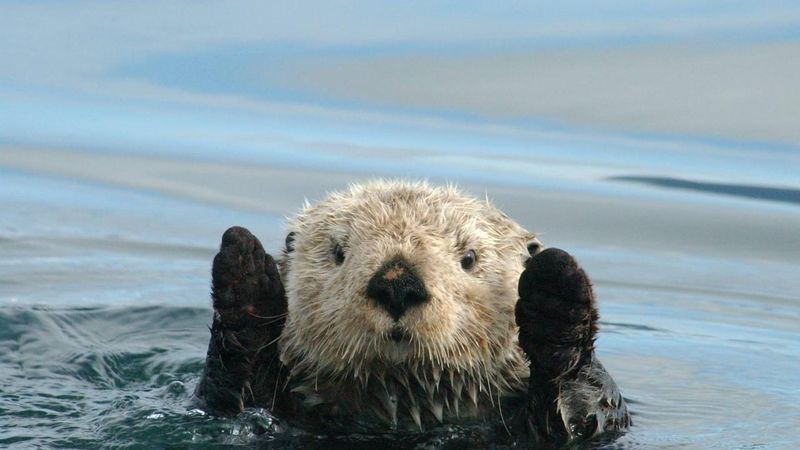
Otters are the playful acrobats of the aquatic world, known for their lively behavior and social interactions.
Found in rivers, lakes, and coastal regions, otters are often seen frolicking in the water or sliding down muddy banks, showcasing their love for fun and adventure.
Their playful antics not only entertain observers but also help strengthen social bonds within their groups. These creatures are incredibly resourceful, using tools like stones to crack open shellfish, showcasing their intelligence and adaptability.
Their diet primarily consists of fish and invertebrates, which they skillfully hunt using their sharp senses and agile movements.
Otters play a crucial role in maintaining the health of aquatic ecosystems by controlling fish populations and promoting biodiversity.
Conservation efforts aimed at preserving their habitats are vital to ensuring their continued presence in the wild.
Watching otters in their natural environment is a joy, as they remind us of the importance of play and curiosity in the natural world.
7. Elephant
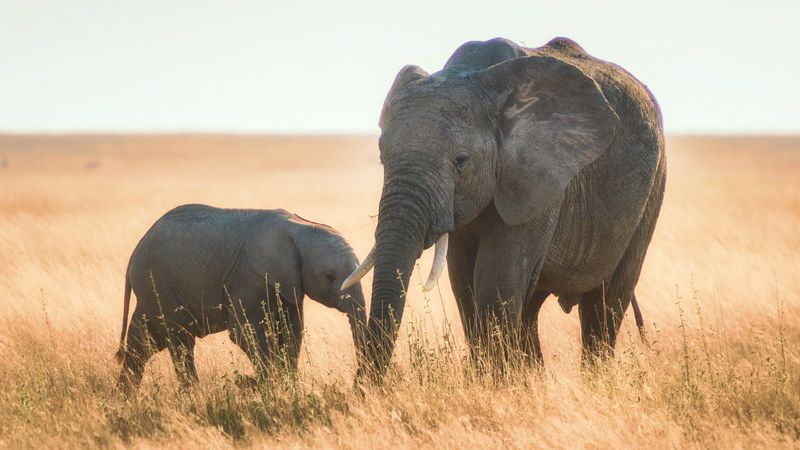
Elephants, the gentle giants of the savannah, are celebrated for their intelligence, empathy, and strong social bonds.
These majestic creatures are often seen in large family groups, led by a matriarch who guides them through the challenges of the wild. Their complex social structure is a testament to their emotional depth and intelligence.
Known for their memory and problem-solving skills, elephants exhibit behaviors that reflect compassion and understanding. They are often seen comforting one another in times of distress, showcasing their profound emotional capacity.
This empathetic nature extends to their interactions with other species, earning them admiration and respect.
Elephants play a vital role in their ecosystems by helping to shape the landscape and create habitats for other animals.
Their presence in the wild is crucial for biodiversity, and conservation efforts are essential in protecting them from threats such as poaching and habitat loss.
Observing elephants in their natural habitat is an awe-inspiring experience, highlighting the beauty and complexity of the animal kingdom.
8. Penguin
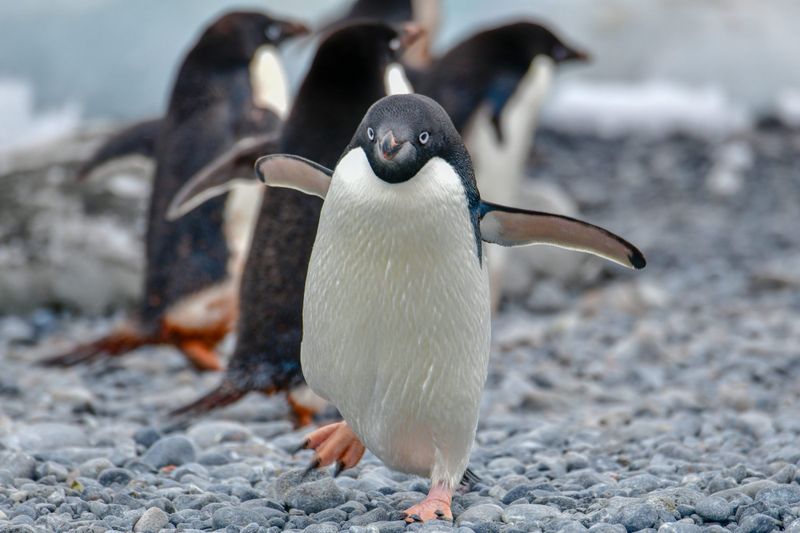
Penguins, with their distinctive waddle and tuxedo-like appearance, are among the most endearing birds in the animal kingdom.
Found in the icy regions of the Southern Hemisphere, penguins are highly adapted to their cold environments, relying on their dense feathers and blubber for insulation.
These birds are incredibly social, living in large colonies that can number in the thousands.
Their communal lifestyle provides warmth and protection, as they huddle together during harsh weather to conserve heat. This cooperation and teamwork are critical to their survival in such a challenging environment.
Penguins are skilled hunters, primarily feeding on fish and krill, which they catch with impressive speed and agility in the water.
Watching a group of penguins navigate their icy world is a delightful sight, offering a glimpse into their cooperative and resourceful nature.
Protecting their habitats is vital to ensuring these charming birds continue to thrive in the wild.
9. Meerkat
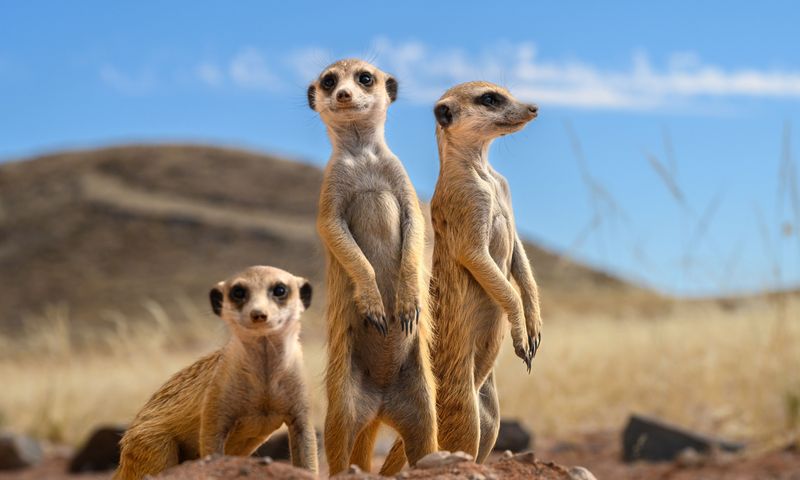
Meerkats are the vigilant sentinels of the animal kingdom, known for their curious and cooperative nature.
Found in the arid regions of southern Africa, these small mammals live in tight-knit groups, working together to survive the harsh desert environment.
Their social structure is intricate, with each member playing a specific role, ensuring the group’s safety and well-being.
One of the most captivating behaviors of meerkats is their cooperative vigilance.
While some members forage for food, others stand guard, scanning the horizon for predators. This teamwork ensures the group’s survival and allows them to thrive in their challenging habitat.
Meerkats primarily feed on insects and small vertebrates, using their sharp claws to dig into the ground and uncover hidden prey.
Their ability to work together and adapt to their environment makes them a symbol of community and resilience.
Observing meerkats in the wild is a heartwarming experience, showcasing the power of cooperation and the bonds that unite them.
10. Red Panda
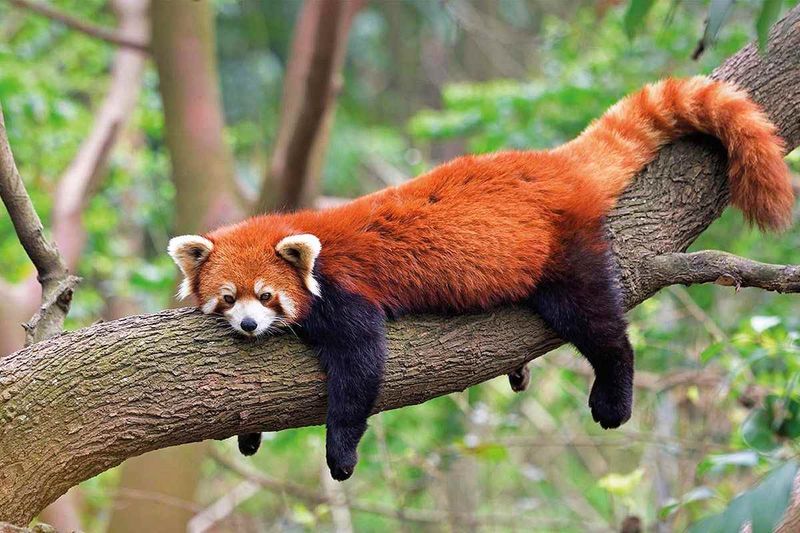
Red pandas are the charming acrobats of the Himalayas, known for their striking red fur and bushy tails.
These adorable creatures reside in the temperate forests of the eastern Himalayas, where they spend much of their time in the trees, foraging for bamboo and other vegetation.
Despite their name, red pandas are not closely related to giant pandas. Instead, they belong to their own unique family, and their appearance is more akin to that of a raccoon.
Their playful nature and solitary lifestyle make them fascinating subjects for wildlife observers.
Red pandas face significant threats from habitat loss and poaching. Conservation efforts are crucial in ensuring their survival, as these animals play an important role in maintaining the health of their forest ecosystems.
Encountering a red panda in the wild is a special experience, highlighting the need to protect these enchanting creatures and their natural habitats.






